Top 10 facts about the Prague Dancing House
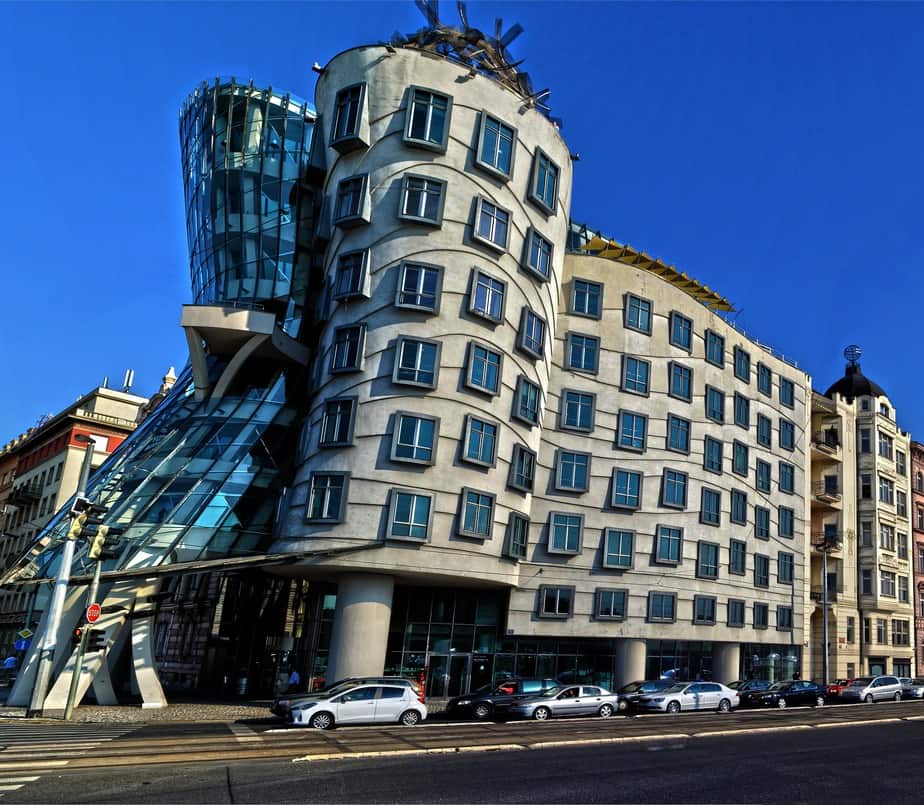
The Dancing House in Prague, image by Lenka Sevcikova sourced from Pixabay
You have seen the building many times during your vacation in Prague and it has always caught your eye. The interesting shapes, the confusing elements, and the way it stands out among the rest of the buildings. Now you want to learn more about it – The Dancing House.
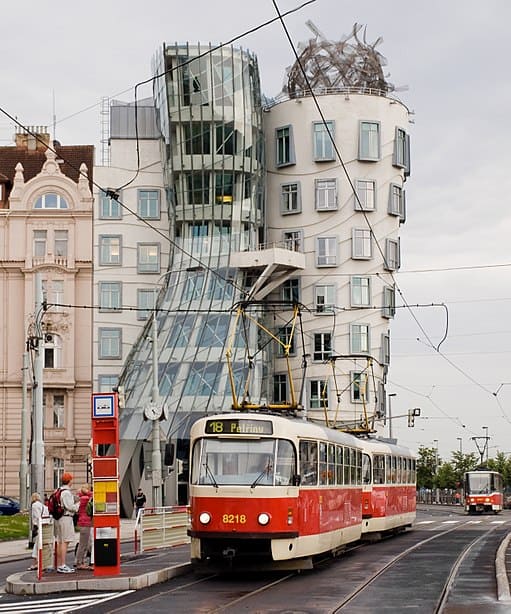
Jiráskovo_náměstí,_Tatra_ – By Honza Groh (Jagro) [CC BY-SA (https://creativecommons.org/licenses/by-sa/3.0)]
1) The history behind the house
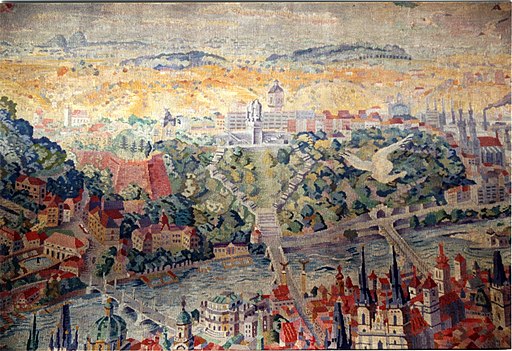
Praha Unique Communist Gobelin of the Stalin Years – By Txllxt TxllxT [CC BY-SA (https://creativecommons.org/licenses/by-sa/4.0)]
During the Velvet Revolution, the non-violent transition of power from the Communist regime in 1989, Havel became popular and a leader of the country. He was elected president of Czechoslovakia, and continued the development of the ideas of what to do with the vacant site. Eventually, he chose to have the famed architect survey the site, and originally hoped for it to become a cultural center. Nowadays, we know this was not the architect’s idea, due to the building that stands today.
Nationale-Nederlanden, a Dutch insurance company, agreed to sponsor the building of a house on the talked-about site. The bank chose Milunic as the designer and asked him to partner with Frank Gehry, a well-known and respected Canadian-American architect. The funding for the project was extensive, due to the bank’s prowess and financial state at the current time. The two architects met in 1992 in Geneva and began to brainstorm and edit the original idea, into what would become the merging of static and dynamic themes – creating the interesting and multi-directional building we see today.
2) The style of the building is considered deconstructivist

Dancing House – By Kevin Boniface – User: (WT-shared) Kboniface at wts wikivoyage [CC BY-SA (https://creativecommons.org/licenses/by-sa/4.0)]
In the middle of the building, there are two main parts that comprise the structure. The first part is a glass tower supported by curved pillars, and the second has uneven mouldings and crooked windows, adding to the chaotic theme. The windows have protruding frames, creating a 3-D effect to shift perspective.
3) Eva Jiřičná designed most of the interior

Eva_Jiřičná_(2019) – By Jindřich Nosek (NoJin) [CC BY-SA (https://creativecommons.org/licenses/by-sa/4.0)]
Jiřičná was born in southeastern Moravia in the Czech Republic and is a well-known architect and interior designer. She studied engineering and architecture at the Prague Academy of Fine Arts and later moved to London in 1968. She spent 8 years working on the construction of the Brighton Marina and then formed her own practice at the end of the 1980s. She began to gain recognition in the mid ‘80s and began designing retail shops, forming businesses, and creating connections.
This British architect designed much of the interior of the Dancing House. All 9 floors overground and 2 floors underground were laid-out and created by Jiřičná, the brainchild behind the asymmetric rooms and shapes. The commercial areas, in the lobby and the first floor, are asymmetric as well. The interior also contains six floors of office spaces, a ninth-floor restaurant, and small, zig-zagging hallways.
4) The building became infamous for its unique and controversial design

Dancing House – By Christine Zenino from Chicago, US [CC BY (https://creativecommons.org/licenses/by/2.0)]
5) The 7th-floor now contains an upscale and luxury restaurant
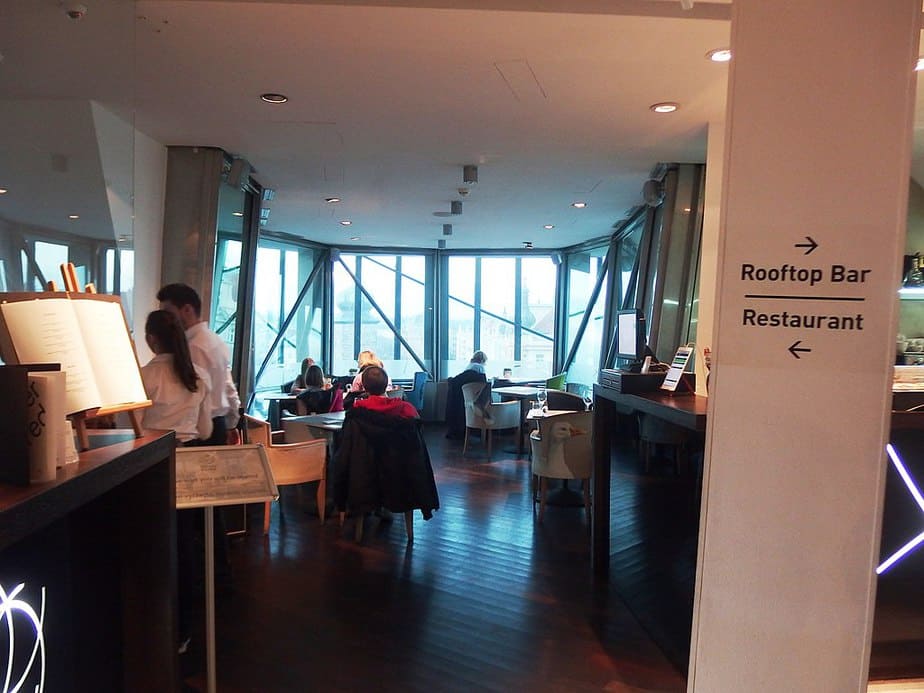
Praha,_Tančící_dům,_Ginger_&_Fred_restaurant – By Palickap [CC BY-SA (https://creativecommons.org/licenses/by-sa/4.0)]
6) The Dancing House hosts exhibitions in the gallery

Young Lady on a Balcony Gerrit Dou and Studio 1664 National Gallery Prague – By Gerrit Dou [Public domain]
The gallery also wants to connect the general public with the art world by providing educational opportunities. Tours, lectures, and open discussions are all available to anyone who wants to learn more about a specific exhibition, art style, or art history. The website also provides information about past exhibitions that have been on display at the gallery, letting the public learn more about some pieces they may have seen in person.
7) The Dancing House also contains a luxury hotel for those special weekends

Dancing House – By Przemek Pietrak [CC BY-SA (https://creativecommons.org/licenses/by-sa/3.0)]
With a convenient location of less than a mile from Charles Bridge and Wenceslas Square, the ability to stay in this unique accommodation is a once-in-a-lifetime experience that we would highly recommend.
8) The Dancing House won the 1996 Design of the Year
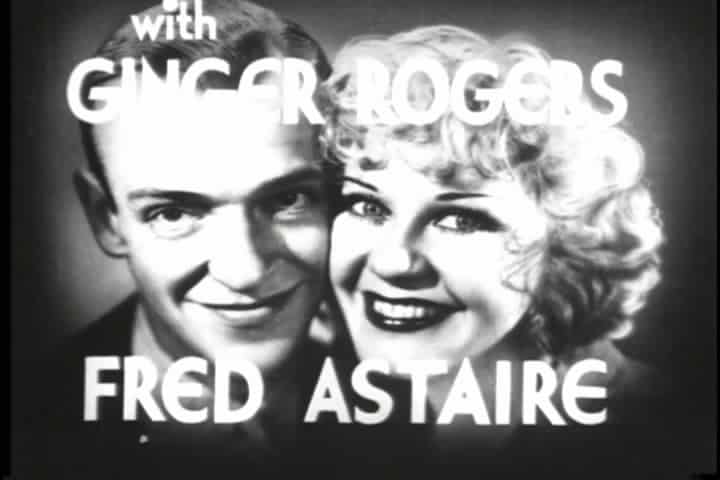
Flying Down to rio Astaire and Rogers – By .Merian C. Cooper, Lou Brock [Public domain]
9) The interesting outline of the building is featured on Czech currency

Dancing House 2 – By Ronnie Macdonald from Chelmsford and Largs, United Kingdom [CC BY (https://creativecommons.org/licenses/by/2.0)]
The coin has been in circulation since 2005 and is a non-circulating coin. The currency is a Koruna, which has been the medium since 1993. Vladimir Oppl was the engraver of the coin. On one side, it says ‘DESET STOLETÍ ARCHITEKTURY, 2000 Kč, ČESKÁ REPUBLIKA,’ and the other side ‘SOUČASNOST·TANČÍCÍ DŮM V PRAZE, 2005’ is engraved.
10) The Dancing House also features a rooftop bar along with the restaurant
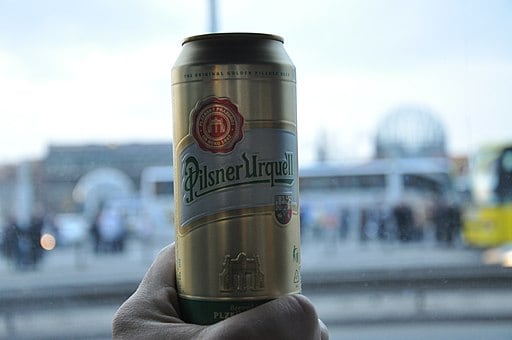
Jorge Láscar from Australia [CC BY 2.0 (https://creativecommons.org/licenses/by/2.0)]
The bar serves the traditional drinks of wine and beer, as well as a variety of spirits, and speciality cocktails like a Mai Tai or Black Russian. Non-alcoholic drinks, protein shakes, and other hot drinks are available for those who would rather have a daytime refreshment or for children.
You can easily attend one of the bar events by clicking ‘Events’ on their website, and seeing what’s on next. They usually have events for certain holidays and music occasions, like St. Patrick’s Day or No Name band tour.
The architecturally-stunning Dancing House has an interesting history that matches its unique outward appearance
The Dancing House is an architecturally-unique building which attracts the eyes of thousands of tourists that visit this beautiful city. Along with the Prague Castle, beautiful churches, traditional restaurants, and endless pubs, this artistic building is a famous and popular tourist attraction for all who visit the country’s capital.
Planning a trip to Paris ? Get ready !
These are Amazon’s best-selling travel products that you may need for coming to Paris.
Bookstore
- The best travel book : Rick Steves – Paris 2023 – Learn more here
- Fodor’s Paris 2024 – Learn more here
Travel Gear
- Venture Pal Lightweight Backpack – Learn more here
- Samsonite Winfield 2 28″ Luggage – Learn more here
- Swig Savvy’s Stainless Steel Insulated Water Bottle – Learn more here
Check Amazon’s best-seller list for the most popular travel accessories. We sometimes read this list just to find out what new travel products people are buying.










